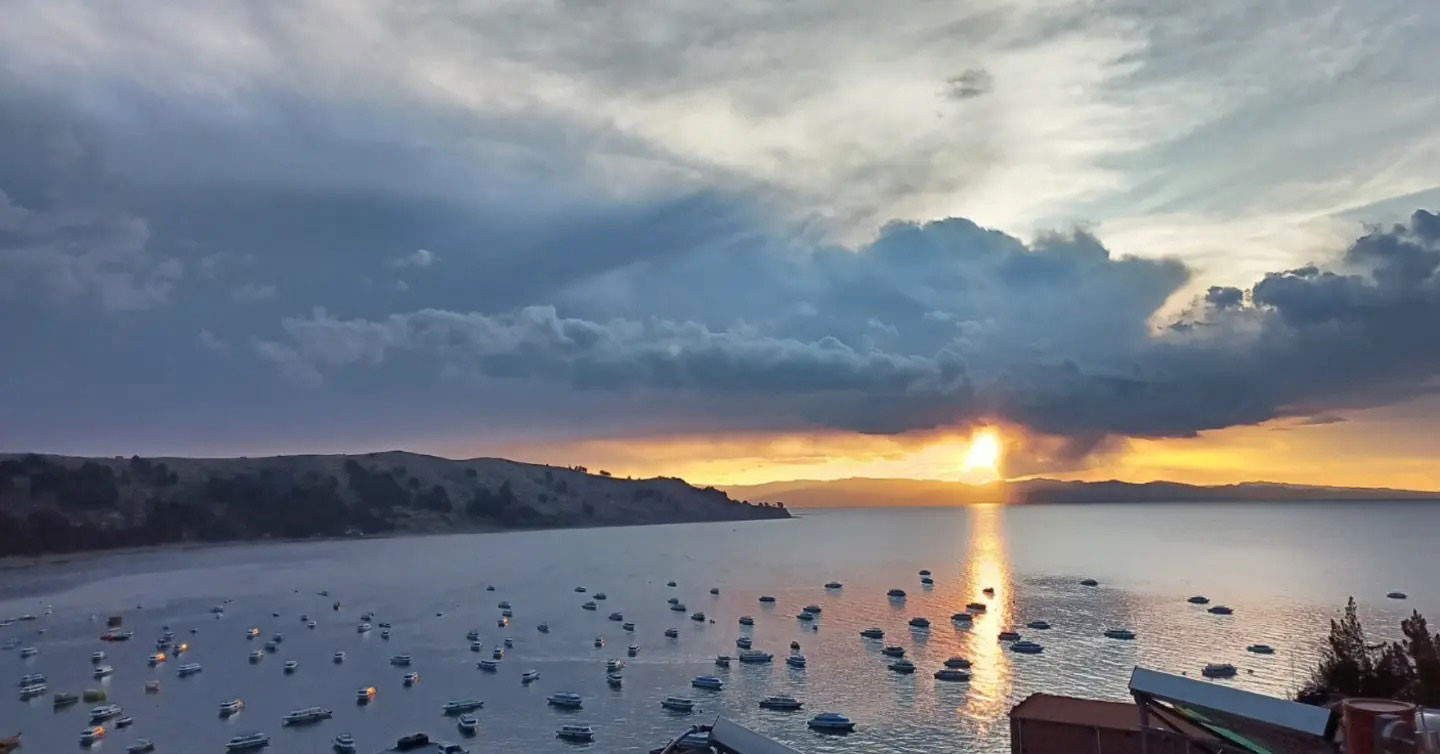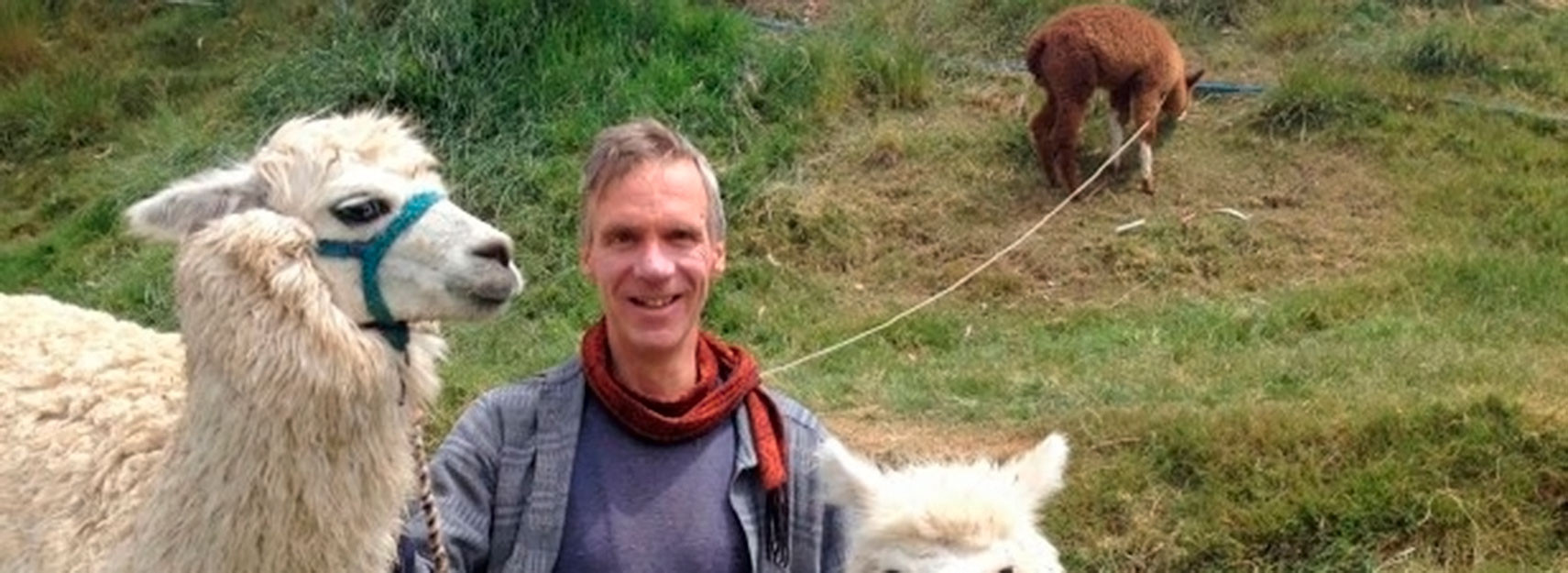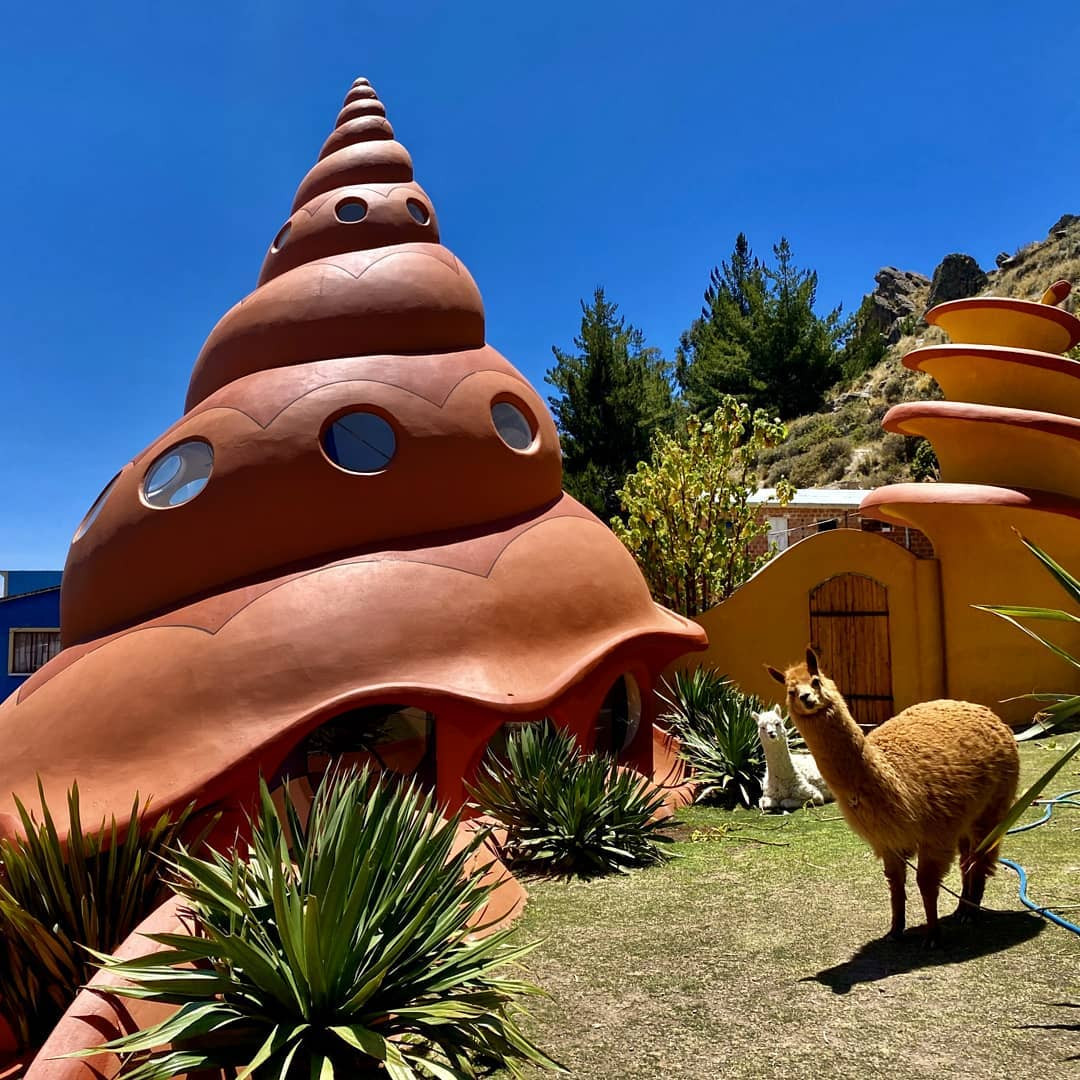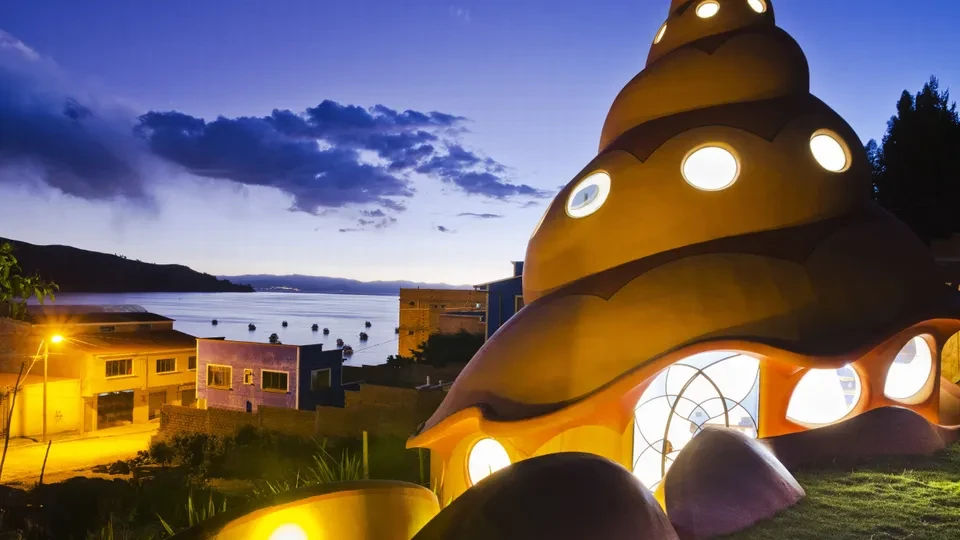Article
Las Olas, Lake Titicaca, Bolivia
Monday 22 de July del 2024
Fancy spending a night in a giant sculpture? Las Olas is a magical retreat on a hillside above the shores of Lake Titicaca and Copacabana beach, with seven suites in their own two-floor buildings shaped like eggs, beehives or fairytale towers, with stained glass windows, circular beds in alcoves, and shell-like spiral staircases – all of which have been created by German sculptor and owner Martin Stratker. Each has its own kitchen and garden with hammocks. One has a bed on a platform reached by a rope ladder, another an indoor water feature. It's an incredibly creative place, with a great cafe too.
• +591 2862 2112, hostallasolas.com. Doubles from £28





